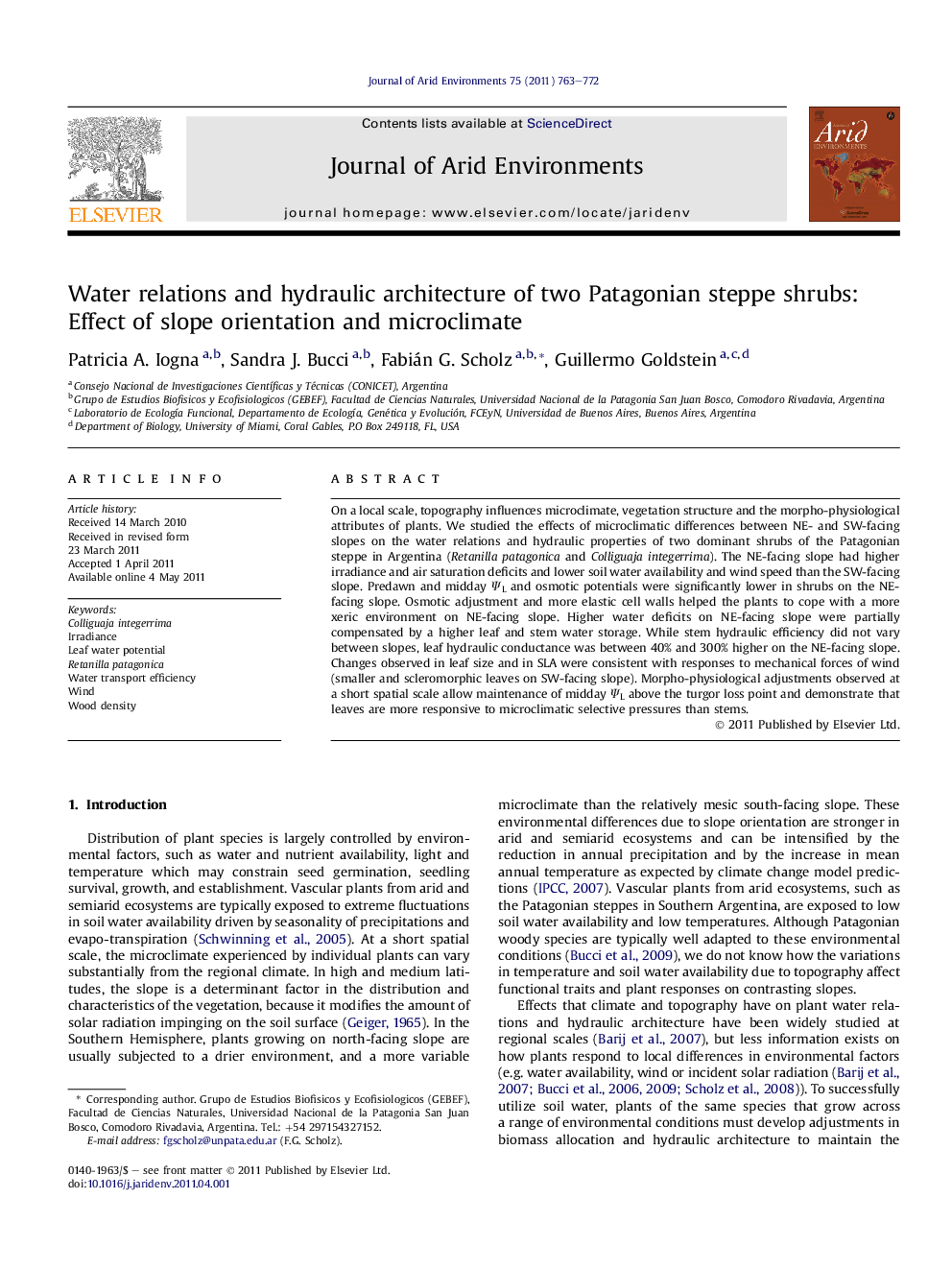| Article ID | Journal | Published Year | Pages | File Type |
|---|---|---|---|---|
| 4393620 | Journal of Arid Environments | 2011 | 10 Pages |
On a local scale, topography influences microclimate, vegetation structure and the morpho-physiological attributes of plants. We studied the effects of microclimatic differences between NE- and SW-facing slopes on the water relations and hydraulic properties of two dominant shrubs of the Patagonian steppe in Argentina (Retanilla patagonica and Colliguaja integerrima). The NE-facing slope had higher irradiance and air saturation deficits and lower soil water availability and wind speed than the SW-facing slope. Predawn and midday ΨL and osmotic potentials were significantly lower in shrubs on the NE-facing slope. Osmotic adjustment and more elastic cell walls helped the plants to cope with a more xeric environment on NE-facing slope. Higher water deficits on NE-facing slope were partially compensated by a higher leaf and stem water storage. While stem hydraulic efficiency did not vary between slopes, leaf hydraulic conductance was between 40% and 300% higher on the NE-facing slope. Changes observed in leaf size and in SLA were consistent with responses to mechanical forces of wind (smaller and scleromorphic leaves on SW-facing slope). Morpho-physiological adjustments observed at a short spatial scale allow maintenance of midday ΨL above the turgor loss point and demonstrate that leaves are more responsive to microclimatic selective pressures than stems.
► Microclimatic affects water relations and hydraulic properties of patagonian shrubs. ► Plants exposed to high irradiance show osmotic and elastic adjustments. ► Leaf hydraulic capacity increase in plants on NE-facing slope. ► Leaf size and specific leaf area are affect by mechanical forces of wind. ► Leaves are more responsive to microclimatic selective pressures than stems.
